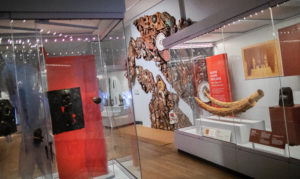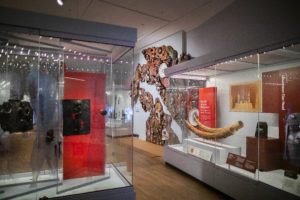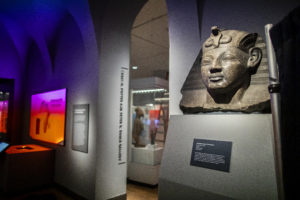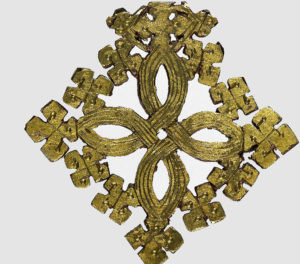
On November 16, 2019, the Penn Museum in Philadelphia, PA unveiled a number of newly renovated exhibits, including their newly designed African Galleries. The exhibit covers a 4,000 square-ft space where visitors have the opportunity to trace the paths of artifacts from their African beginning to their current location in Philadelphia.
“Unlike many of our other collections, many of these materials were either purchased or collected in Africa as opposed to excavated, but it is a really significant collection,” says Dr. Julian Siggers, director of the Penn Museum. He says this for several reasons. For one thing, this unique experience opens up the floor for conversations surrounding colonialism and its lasting effects — the Museum is shining a light on these objects and the often illicit means by which they were brought from Africa to the western world.
Dr. Tukufu Zuberi, the Lead Curator of the Africa Galleries, has led the changes in this exhibit, meeting with five different museum directors in Africa to establish a conversation and a partnership surrounding these collections. The museums he has contacted are relatively new, with great ambitions and aspirations; the Penn Museum hopes to establish a partnership and loan program with them soon, according to Siggers. “I think one of the things that really separates this one out from other galleries is that it sort of puts it in a more anthropological context,”says Siggers. “We’re not treating these objects as art objects, but objects with a great deal of significance in how they operated.”
A Window on Benin
Perhaps one of the most notable artifact sets in the exhibit is from the royal kingdom of Benin. These objects were acquired after the British Punitive in 1897 and entered the art market between 1910-1920, where the Penn Museum purchased a number of works. “We have court art and regalia on display for visitors to consider the histories of the kingdom – the pre-colonial, colonial and post-colonial histories,” says Dwaune Latimer, Keeper of African Collections. “Visitors will have an opportunity to reflect on the power and longevity of the kingdom and its colonial and current interpretation.”
The story of Benin, like other African countries, is one that is deeply rooted in the effects of colonialism. Siggers emphasizes, “To actually tell the story of the exhibition, to acknowledge that these objects were taken by force, we wanted to be transparent. We actually placed in the gallery a copy of the letter from the director for the museum to the art dealers in London to show how we acquired them. We wanted to be that transparent because we want to use this as a dialogue of what these museums should be doing with objects from Benin when their context is so clearly known.”
Although the Museum is using this exhibit to address issues of colonialism, it is also shining a light on the cultural and historical aspects of Africa, often not explored in the mainstream media. In addition to the topic of enslavement, the African Galleries focus on African commerce. Siggers explains, “Africa was not cut off from the rest of the world. It was heavily involved with trade in Europe, the Middle East, and India so [the exhibit] tells the story of Africa in its global position as well.” Continues Siggers, “[So] the Benin objects are really spectacular. They’re typical of African art, so I think people will respond to those. These are objects that influenced a whole generation of western artists as well, with people like Picasso having their world view shifted after seeing these objects.”
When asked what she hopes visitors will take away from their experience in the gallery, Latimer says, “I hope that the exhibition will illustrate that the cultural artifacts on display are only an example of the long and complex history of Africa and that it will offset whatever vague or stereotyped constructs visitors may harbor about Africa.”
__________________________

Above and below: Views of the new Africa Galleries. Courtesy Eric Sucar, University of Pennsylvania
__________________________

__________________________

Ethiopian Cross, among the artifacts on exhibit in the new Africa Galleries. Courtesy Penn Museum
__________________________
The Stories Behind The Material Culture
In addition to the Benin collection, there is a mix of ancient artifacts and modern art throughout the exhibit, including beautiful ivory artifacts, combs, manuscripts, contemporary art, and African currency. “There is a great celebration of the ingenuity of African design as well,” Siggers says. “From the 1970s, but also a number of really amazing contemporary artworks that we commissioned.” The new galleries are working to elevate the stories of these cultures, and the voices inspired by these works. Latimer explains, “Material culture communicates to us in many ways but this particular exhibit aims to provide the context under which the artifacts were collected as well as tell visitors about the people that produced the artifacts and the collectors of the artifacts. So, the galleries will allow people to reflect on African material culture through a cultural and historical perspective.”
Since the topic of colonialism is at the forefront of the conversation in the African Galleries, issues of repatriation are also being addressed head on. “The people to talk to about repatriation are not so much ourselves, but these other museums,” says Siggers. “So that’s what we want to do. This is part of a much larger conversation that’s happening in many museums across the United States and also Europe as well.”
The newly renovated African Galleries are part of the Penn Museum’s efforts to redesign their space and bring more global stories to Philadelphia. The African Galleries opened at the same time as the new Mexico and Central American Galleries. Visitors can also view the museum’s famous Sphinx, now on display in the main gallery.
Visitors can explore the African Galleries at the Penn Museum Tuesday through Sunday between 10am and 5pm.





